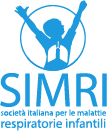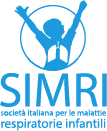Authors (in original): Dr. Luigi Matera, MD, Department of Maternal and Pediatric Sciences, Sapienza University of Rome
Reviewer: Dr. Enrica Mancino, MD, Maternal and Pediatric Sciences, Policlinico Umberto I, Sapienza University of Rome
Pediatric spirometry is a key, non-invasive test to evaluate your child’s lung function. It’s widely used to diagnose respiratory conditions like asthma by measuring how much air your child can inhale and exhale—and how quickly they can do it. Below, the FAQ-style format explains how the test is performed, when it’s recommended, how to prepare your child, and how to understand the results. This information helps you know what to expect during the procedure and how the results may guide your child’s care.
What Is Spirometry?
Spirometry is a straightforward breathing test that assesses lung function by measuring how much air your child can move in and out of their lungs—and how fast. It’s essential in diagnosing various respiratory issues, especially asthma.
This definition aligns with general medical explanations of spirometry as a common lung function test that evaluates inhaled and exhaled volume and speed of airflow (simri.it).
When Is Spirometry Recommended?
Spirometry is especially advised if your child:
- Frequently coughs
- Experiences shortness of breath while running, playing, climbing stairs, or walking quickly
- Complains of chest tightness
- Has undergone multiple courses of treatment for respiratory issues
These indications match standard clinical guidelines recommending spirometry when children show persistent respiratory symptoms or respond poorly to prior treatments (simri.it).
How Is Spirometry Performed?
Spirometry is quick, easy, and non-invasive—typically completed in under 10 minutes. Here’s what to expect:
- Height Measurement
Your child’s height is recorded because lung size correlates with height. - Preparation
A soft nose clip may be applied to prevent air leaks through the nostrils, and your child breathes through a one-time-use mouthpiece connected to the spirometer. - Execution of the Test
Following instructions from the healthcare professional, your child will:- Take a deep breath with lips sealed around the mouthpiece
- Exhale as forcefully and completely as possible
- Continue until directed to stop
The maneuver is typically repeated at least three times (but usually no more than eight) to ensure accurate and reproducible results. It’s normal for children to feel tired or frustrated—encouragement and rest between attempts are important.
- Bronchodilator (Reversibility) Test
Sometimes, the test is repeated after your child inhales a bronchodilator (such as salbutamol). This allows comparison of lung function before and after medication to assess how much airway function improves.
Which Medications Should Be Avoided Before the Test?
Certain respiratory medications can affect test outcomes:
- Short-acting bronchodilators (e.g. salbutamol or salbutamol–ipratropium combos) should not be used for at least 4 hours before testing.
- Long-acting bronchodilators (e.g. salmeterol, formoterol or combinations with steroids) should be withheld for 12 to 24 hours prior.
As always, confirm with your child’s doctor whether medications should be paused before the test.
How Are Spirometry Results Interpreted?
Results are compared against normal ranges based on your child’s age, height, and sex. If within expected ranges, that indicates normal lung function; deviations may signal obstructive (e.g., asthma) or restrictive respiratory patterns.
A doctor may interpret results as:
- Normal: lung function appropriate for your child
- Obstructive: difficulty exhaling airflow (common in asthma)
- Restrictive: reduced lung expansion
- Mixed: combination of both patterns
These findings inform diagnosis, management, and monitoring.
How Should I Prepare My Child for the Test?
- Avoid strenuous physical activity and large meals for 2 hours before the test.
- Follow your doctor’s instructions regarding withholding any inhaled medications that might interfere with the results.
These preparations help ensure reliable readings.
Does a Normal Spirometry Rule Out Respiratory Issues?
No—normal results don’t automatically mean your child is free of asthma or other conditions. Your child’s irritability, symptom patterns, and medical history should be considered, even if spirometry appears normal. A normal test simply means that at the time of assessment, lung function was within expected limits.
Why Might Spirometry Need to Be Repeated?
Spirometry is an excellent tool for evaluating and tracking chronic respiratory conditions like asthma. Even if initial tests are inconclusive, repeating several tests over time can help confirm diagnosis, monitor treatment effectiveness, and guide long-term care.
Read the Pdf
Pediatric Spirometry – Frequently Asked Questions
What is pediatric spirometry?
Pediatric spirometry is a simple, non-invasive breathing test that measures how much air your child can inhale and exhale and how fast. It helps diagnose and monitor conditions such as asthma by assessing airflow obstruction and overall lung function.
When should my child have spirometry?
It’s recommended if your child has frequent cough, shortness of breath during play or exercise, chest tightness, or has needed repeated treatments for respiratory symptoms. Spirometry also helps confirm and monitor asthma.
How is the test performed?
Your child’s height is measured first. Wearing a soft nose clip and using a single-use mouthpiece connected to a spirometer, your child will take a deep breath and blow out as hard and as long as possible, following the clinician’s instructions. The maneuver is repeated at least three times (usually no more than eight) with short rests in between to obtain reliable results.
What is a bronchodilator (reversibility) test?
After the baseline test, your child inhales a short-acting bronchodilator (for example, salbutamol) and repeats spirometry about 15 minutes later. The before-and-after results are compared to see whether lung function improves and by how much, indicating the degree of reversible airway obstruction.
Which medicines should be avoided before spirometry?
Short-acting bronchodilators (e.g., salbutamol or salbutamol + ipratropium) should be withheld for at least 4 hours before testing. Long-acting bronchodilators (e.g., salmeterol or formoterol, including fixed combinations with inhaled steroids) are typically paused 12–24 hours prior. Always follow your clinician’s instructions.
How are spirometry results interpreted?
Results are compared with normal values based on age, height, and sex. Clinicians review measures such as FEV1, FVC, the FEV1/FVC ratio, and sometimes mid-expiratory flow (FEF25–75). Patterns may be normal, obstructive, restrictive, or mixed and guide diagnosis and treatment.
How should I prepare my child for the test?
Avoid strenuous physical activity and large meals in the two hours before testing. Confirm with your clinician whether any inhaled medicines should be temporarily paused so the test reflects your child’s baseline lung function.
Does a normal spirometry exclude respiratory disease?
Not always. A normal result means lung function was within expected limits at the time of testing, but your child’s symptoms and medical history still matter. Some children with suspected asthma may need repeat tests or additional evaluation even if one test is normal.
Why might my child need repeat spirometry?
Spirometry tracks chronic conditions like asthma over time, helps confirm a diagnosis when earlier tests were inconclusive, and assesses how well treatments are working. Repeating the test provides trend data to personalize your child’s care.
No metadata found.



